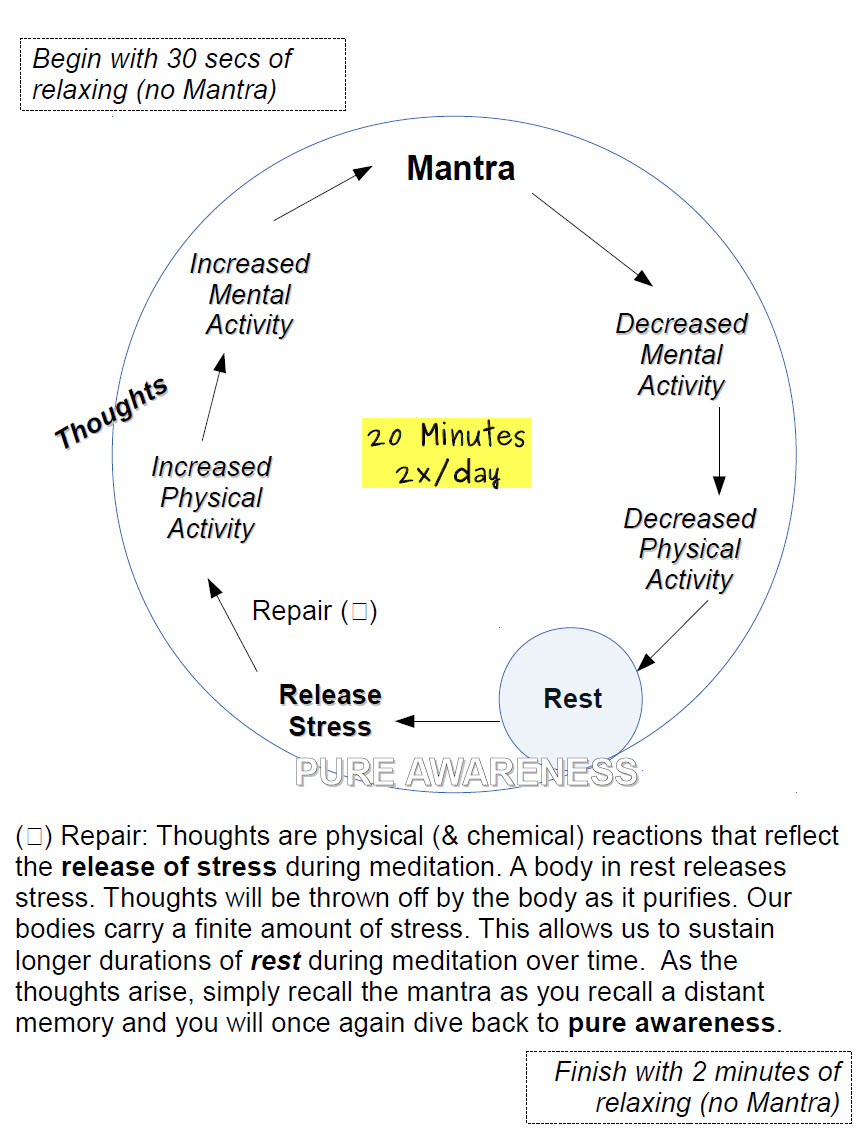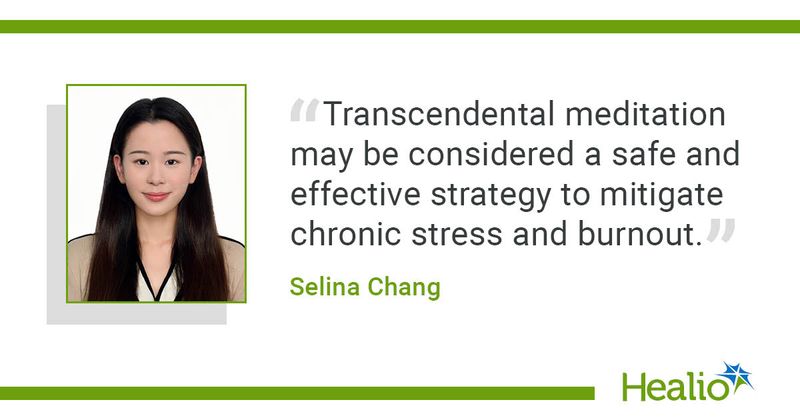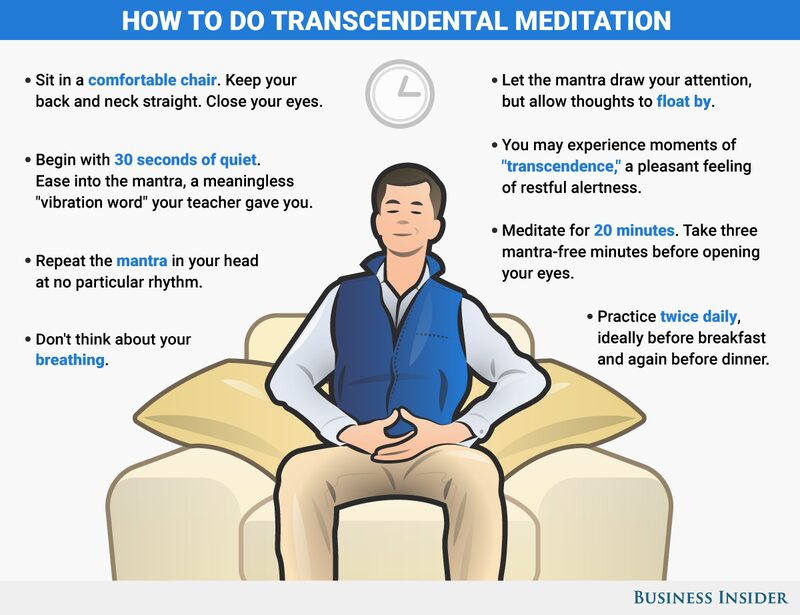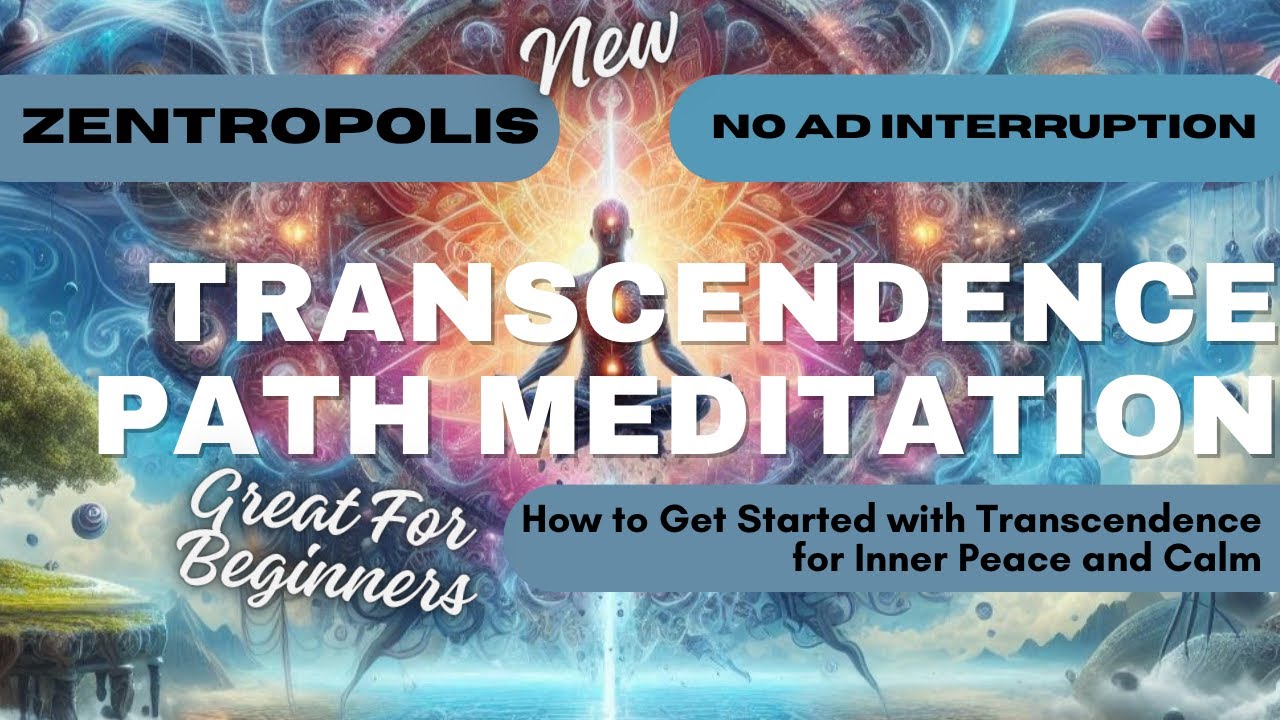Key Takeaways
- Transcendental Meditation (TM) has been shown to reduce PTSD symptoms by up to 40% in just 30 days of regular practice, offering a natural complement to traditional treatments.
- Clinical studies demonstrate TM’s effectiveness in helping military personnel reduce or even eliminate psychotropic medication while improving symptom management.
- Unlike other meditation techniques, TM produces larger and more consistent results for PTSD, with effect sizes of -1.13 compared to -.52 to -.66 for other meditation approaches.
- Regular TM practice creates measurable neurological changes that help regulate the autonomic nervous system, directly addressing the hyperarousal state common in PTSD.
- The David Lynch Foundation offers specialized programs for veterans and trauma survivors seeking to learn Transcendental Meditation techniques for PTSD relief.
PTSD disrupts lives with intrusive memories, hypervigilance, and emotional numbness. When combined with the persistent ringing of tinnitus—a common comorbid condition among veterans and trauma survivors—the suffering can be overwhelming. Yet amid pharmaceutical treatments with concerning side effects, Transcendental Meditation (TM) emerges as a powerful natural intervention shown to significantly reduce symptoms of both conditions. The David Lynch Foundation has been pioneering research and programs using this technique to help veterans and others reclaim their peace of mind.
Transcendental Meditation isn’t just another relaxation technique—it’s a systematic practice backed by over 400 published studies investigating its effects on mind and body. For PTSD sufferers, this matters tremendously. Recent meta-analysis research published in Medicina found TM significantly outperformed other meditation approaches for PTSD symptom reduction, with effect sizes more than double those of alternative meditation practices.
The beauty of TM lies in its simplicity and accessibility. Unlike therapies requiring extensive trauma processing, TM provides immediate physiological calming effects from the first session. Practiced just 20 minutes twice daily, it creates a unique state of “restful alertness” where the body experiences deep relaxation while the mind remains clear and alert—precisely the balance disrupted by traumatic experiences.
How Transcendental Meditation Breaks the PTSD-Tinnitus Cycle
“Transcendental Meditation | PubWriter” from read.pubwriter.com and used with no modifications.
Post-traumatic stress disorder and tinnitus often form a vicious cycle—each condition worsening the other. The hypervigilance of PTSD makes tinnitus sounds more intrusive, while the constant noise reinforces the nervous system’s state of alarm. Transcendental Meditation intervenes in this cycle by addressing their shared root: an overactivated stress response. By providing the nervous system with periods of profound rest, TM helps dial down the body’s alarm system that perpetuates both conditions.
What makes this approach particularly valuable is that it doesn’t require you to “try” to relax or control your thoughts—efforts that often backfire for those with PTSD. Instead, TM uses a specific sound (mantra) and precise technique to allow the mind to settle naturally into deeper states of consciousness, beyond the hyperaroused state characteristic of trauma. This effortless quality makes it especially suitable for those who struggle with other mindfulness practices that demand concentration or thought control.
“After regularly practicing Transcendental Meditation, soldiers began to report that they felt less irritable, slept better, and their relationships were improving.” – Jennifer J. Williams, behavioral health therapist at the TBI Clinic
The Science Behind Transcendental Meditation’s Effectiveness
“Transcendental meditation lowers …” from www.healio.com and used with no modifications.
The effectiveness of TM for PTSD isn’t mysterious—it’s neurological. During TM practice, the brain produces coherent alpha waves across regions, indicating organized brain function. This coherence helps restore normal communication between the prefrontal cortex (responsible for rational thinking) and the amygdala (the brain’s fear center), which becomes dysregulated in PTSD. Regular practice strengthens these neural connections, gradually restoring the brain’s ability to process traumatic memories without triggering the full stress response. For more insights, you can explore the impact of Transcendental Meditation on PTSD symptoms.
How TM Differs From Other Meditation Practices
While mindfulness meditation asks practitioners to observe thoughts and sensations, often requiring focused attention, Transcendental Meditation takes a fundamentally different approach. TM involves no concentration, contemplation, or control of thoughts. Instead, it utilizes a personalized mantra and specific technique that allows the mind to naturally settle into progressively quieter states while maintaining alertness.
This distinction proves crucial for trauma survivors. Many PTSD patients report that mindfulness meditation sometimes increases their awareness of distressing thoughts or bodily sensations, potentially triggering rather than calming. TM sidesteps this issue by transcending thought altogether rather than observing it. The comparative research bears this out—TM shows significantly larger effect sizes for PTSD symptom reduction (-1.13) compared to mindfulness approaches (-.52 to -.66).
Additionally, TM requires no lifestyle changes, special beliefs, or difficult postures. It can be practiced sitting comfortably in a chair with eyes closed, making it accessible even to those with physical limitations or high levels of agitation. This low barrier to entry helps explain why completion rates in TM studies typically exceed those of other interventions for PTSD.
Neurological Changes During TM Practice
During Transcendental Meditation, EEG studies show distinctive brainwave patterns that distinguish it from ordinary rest or sleep. The brain exhibits increased alpha coherence across hemispheres, indicating whole-brain functioning and integration between different neural systems. This coherence is particularly relevant for PTSD sufferers, whose brain scans typically show dysregulated activity in areas controlling fear responses. Research from the Medical College of Georgia shows these neurological changes correlate directly with symptom reduction in military personnel with PTSD.
TM practice also triggers measurable increases in cerebral blood flow to regions impaired by trauma, particularly the prefrontal cortex. This area, responsible for executive function and emotional regulation, often shows decreased activity in PTSD patients. The restoration of blood flow and activity in this region helps explain the improved decision-making and emotional stability reported by practitioners. For those exploring alternative therapies, yoga for tinnitus relief may also offer complementary benefits.
The Stress Response Connection to Both Conditions
Both PTSD and tinnitus involve dysfunction in how the body processes stress. The autonomic nervous system becomes locked in a sympathetic “fight-or-flight” state, causing hyperarousal, hypervigilance, and heightened sensory sensitivity. This shared mechanism explains why the conditions so often co-occur, particularly in veterans exposed to combat noise and trauma. TM addresses this directly by activating the parasympathetic “rest-and-digest” system, providing a physiological counterbalance.
Studies measuring stress hormones like cortisol show significant reductions after just 8 weeks of regular TM practice. This hormonal rebalancing helps normalize both the stress response and the brain’s processing of sensory information, including auditory signals responsible for tinnitus perception. While the tinnitus sound may still be physically present, its emotional and attentional impact diminishes substantially.
Proven Benefits for PTSD Sufferers
“Post-Traumatic Growth: Benefits of PTSD …” from www.psychiatryfortworth.com and used with no modifications.
Clinical outcomes for PTSD patients using Transcendental Meditation show consistent, measurable improvements across multiple symptom domains. The landmark study published in Medicina revealed that TM produces more substantial symptom reduction than any other meditation technique studied, with benefits appearing within weeks and continuing to accumulate over time. These improvements extend beyond subjective reports to include objective measures of autonomic function, sleep quality, and cognitive performance.
Perhaps most significantly, these benefits appear regardless of trauma type or severity. TM has proven effective for combat veterans, sexual assault survivors, refugees, and natural disaster victims alike. This universality suggests TM addresses fundamental mechanisms of trauma rather than specific symptom profiles, making it a versatile addition to any treatment approach. For more information, you can read about how Transcendental Meditation is effective at treating PTSD.
Reduction in Medication Dependency
One of the most promising findings comes from active-duty military personnel who practiced TM as part of their PTSD treatment. According to research from Augusta University, many participants were able to reduce or completely eliminate their psychotropic medications while maintaining or improving symptom control. This medication reduction represents a significant advancement, as many PTSD medications carry substantial side effects, including memory impairment, sexual dysfunction, and emotional numbing.
For those concerned about medication dependency or side effects, TM offers a complementary approach that can potentially lower medication requirements while providing additional symptom relief. Unlike pharmaceutical interventions that often lose effectiveness over time, TM’s benefits typically increase with continued practice, creating a sustainable long-term strategy for symptom management.
83% of Military Personnel Show Improvement
Military studies of TM for PTSD show particularly impressive results. In one well-documented program at Fort Gordon, 83% of service members with PTSD reported significant symptom improvement after learning and practicing TM. The improvements weren’t limited to subjective reports—clinicians noted visible changes in participants’ demeanor, communication skills, and ability to function in daily activities.
Most remarkably, these benefits appeared even in cases previously resistant to conventional treatments. Military personnel who had failed to respond adequately to prolonged exposure therapy, cognitive processing therapy, or medication regimens still showed substantial improvements with TM, suggesting it works through mechanisms distinct from traditional PTSD treatments.
Sleep Quality Enhancement
Sleep disturbance represents one of the most debilitating aspects of PTSD, with nightmares, insomnia, and hypervigilance creating a cycle of exhaustion and intensified symptoms. TM practice consistently improves sleep quality through multiple pathways, including reduced sympathetic activation, normalized melatonin production, and decreased rumination. Many practitioners report falling asleep more easily, experiencing fewer nightmares, and waking feeling more rested after just weeks of regular practice.
These sleep improvements create cascading benefits, as better sleep enhances emotional regulation, cognitive function, and physical recovery. For those with comorbid tinnitus, improved sleep often represents the most immediate and noticeable benefit, as the meditation technique helps break the cycle of anxiety about noise that typically peaks during quiet nighttime hours. To further explore solutions for tinnitus relief, you might find it helpful to compare white noise machines for effective management.
Emotional Regulation Improvements
Perhaps the most transformative benefit of TM for PTSD sufferers involves emotional regulation. The hallmark symptoms of emotional numbness, irritability, and anger outbursts often improve dramatically with regular practice. This improvement stems from the technique’s normalization of the autonomic nervous system, allowing practitioners to respond appropriately to emotional stimuli rather than overreacting or disconnecting. Many veterans report restored capacity for joy, connection, and appropriate emotional responses within their families after establishing a TM practice.
The emotional benefits extend beyond symptom reduction to include positive states of well-being. Practitioners frequently report increased feelings of inner peace, greater resilience to stress, and renewed sense of purpose. These positive gains help counter the tendency toward isolation and hopelessness that often accompanies chronic PTSD, potentially reducing suicide risk in this vulnerable population.
Relief From Tinnitus Symptoms Through TM
“Cervical Tinnitus Relief Stretches …” from www.youtube.com and used with no modifications.
For those suffering from the dual burden of PTSD and tinnitus, Transcendental Meditation offers particular promise. While TM doesn’t eliminate the physical generation of tinnitus sounds, it fundamentally changes how the brain processes and responds to these sounds. The technique helps break the cycle of attention and distress that makes tinnitus so debilitating, allowing many to experience significant relief despite the continued presence of the sound. If you’re exploring other options, you might consider yoga for tinnitus relief as well.
This relief occurs through multiple mechanisms. First, TM reduces the overall stress and anxiety that typically amplify tinnitus distress. Second, it improves sleep quality, breaking the fatigue-irritability cycle that makes tinnitus harder to tolerate. Third, it enhances frontal lobe function, supporting better attention control and reduced fixation on the tinnitus sound. Finally, regular practice appears to normalize activity in auditory processing regions of the brain, potentially reducing the perceived volume or intrusiveness of tinnitus sounds.
How TM Changes Tinnitus Perception
Tinnitus perception involves complex brain networks extending far beyond the auditory system. Emotional processing centers, particularly the amygdala and anterior cingulate cortex, significantly influence how bothersome or distressing tinnitus becomes. TM practice directly affects these regions, reducing their hyperreactivity and helping create emotional distance from the tinnitus experience.
Many practitioners describe a shift from experiencing tinnitus as an intrusive, anxiety-provoking threat to perceiving it as a neutral background sensation. This perceptual shift doesn’t require the sound to disappear—only that its emotional and attentional impact diminishes. For those who’ve struggled with tinnitus for years, this changed relationship with the sound can be profoundly liberating.
Reducing Sound Sensitivity and Distress
Hyperacusis—abnormal sensitivity to ordinary sounds—frequently accompanies both PTSD and tinnitus, creating additional suffering and isolation. Regular TM practice helps normalize auditory processing by calming the central nervous system and reducing reactivity to sensory stimuli. Many practitioners report being able to tolerate normal environmental sounds with less distress after establishing a regular meditation routine.
This reduced sound sensitivity makes daily functioning easier while also supporting social reintegration. Activities previously avoided due to noise—restaurants, family gatherings, public spaces—often become manageable again. This expanded comfort zone creates opportunities for positive experiences that further reinforce recovery from both conditions. For more information on managing sound sensitivity, you can explore the AudioNotch review for personalized sound therapy options.
Breaking the Anxiety-Tinnitus Loop
The vicious cycle between anxiety and tinnitus perception forms one of the most challenging aspects of the condition. Anxiety increases tinnitus awareness, which triggers more anxiety, creating a self-reinforcing loop. TM effectively disrupts this cycle by addressing both components simultaneously—reducing baseline anxiety while also improving attentional control and sensory processing.
Research indicates this benefit begins appearing within weeks of starting regular practice. In one study of veterans with both PTSD and tinnitus, participants reported an average 34% reduction in tinnitus distress after just one month of twice-daily TM practice. These improvements continued accumulating with longer practice, suggesting TM offers both immediate relief and progressive long-term benefits.
Starting Your TM Practice
“How Transcendental Meditation Works …” from www.businessinsider.com and used with no modifications.
Beginning Transcendental Meditation requires proper instruction from a certified teacher. While many meditation techniques can be learned from books or apps, TM involves personalized instruction with specific elements tailored to each practitioner. This personalization contributes to its effectiveness and accessibility, particularly for those struggling with trauma symptoms.
The standard TM course involves four sessions spread over consecutive days, typically lasting 1-2 hours each. The first session includes personal instruction where you receive your mantra and learn the precise technique. Subsequent sessions provide verification of practice, advanced knowledge, and strategies for integrating TM into daily life. This structured approach ensures proper learning while providing support through the initial adjustment period.
Finding a Certified TM Teacher
Certified TM teachers undergo extensive training to properly instruct this specific technique. The official TM organization maintains teaching centers worldwide and can connect you with qualified instructors in your area. For veterans and active military personnel with PTSD, specialized programs often provide instruction at reduced or no cost through organizations like the David Lynch Foundation.
When selecting a teacher, look for certification from Maharishi Foundation USA (in the United States) or the equivalent organization in your country. These credentials ensure your instructor has completed the standardized training necessary to teach authentic TM. Most certified teachers also have significant personal experience with the technique, providing valuable perspective on its long-term benefits.
Military Studies Show Consistent Success
Military research on TM for PTSD has shown remarkably consistent positive outcomes across diverse populations and settings. From Vietnam veterans to recently returned Iraq and Afghanistan service members, the technique has demonstrated effectiveness regardless of combat era, trauma type, or time since exposure. This consistency stands out in PTSD research, where treatment outcomes often vary widely between populations. For those interested in alternative therapies, exploring yoga for tinnitus relief may offer additional benefits.
In a groundbreaking 2018 study at the Dwight D. Eisenhower Army Medical Center, active-duty personnel with PTSD who learned TM showed significant symptom reduction within just 30 days. By study’s end, many participants had reduced or eliminated their psychotropic medications while maintaining or improving symptom control. These results align with earlier research showing TM’s superior effectiveness compared to psychotherapy alone or medication management for combat-related PTSD.
Measurement of Symptom Reduction
Scientific evaluation of TM’s effects on PTSD uses standardized clinical measures including the CAPS-5 (Clinician-Administered PTSD Scale), PCL-M (PTSD Checklist–Military Version), and QLES-Q (Quality of Life Enjoyment and Satisfaction Questionnaire). Across these instruments, TM consistently produces clinically significant improvements, often exceeding effect sizes seen with conventional treatments. These objective measurements confirm the subjective reports of reduced hyperarousal, improved sleep, decreased flashbacks, and enhanced emotional regulation. For those exploring additional methods of symptom management, the key benefits of yoga for tinnitus relief may also be of interest.
Beyond symptom reduction, researchers have documented improvements in functional outcomes including return to work, reduction in healthcare utilization, and decreased substance use. These practical benefits highlight TM’s potential not just for symptom management but for comprehensive recovery and reintegration. The technique’s effectiveness across multiple outcome domains makes it particularly valuable as part of an integrated treatment approach.
Long-term Sustainability of Benefits
Perhaps most importantly, the benefits of TM for PTSD show excellent sustainability over time. Unlike some interventions that lose effectiveness or require increasing “doses,” TM’s positive effects typically strengthen with continued practice. Follow-up studies tracking veterans for periods up to 3 years after learning TM show maintenance or further improvement of initial gains, suggesting the technique creates lasting neurophysiological changes rather than temporary symptom suppression.
This sustainability likely stems from TM’s nature as a skill rather than a treatment. Once learned, the technique becomes a personal resource that practitioners can use independently throughout life. Many veterans describe TM as the most valuable tool they’ve acquired for managing PTSD symptoms, precisely because it provides immediate relief while building long-term resilience. The progressive improvements seen with regular practice create positive momentum that supports continuing engagement with the technique.
Additionally, TM requires no ongoing professional supervision once properly learned. This self-sufficiency reduces dependency on the healthcare system and provides practitioners with a sense of agency in their recovery. For those in remote locations or with limited access to specialized PTSD care, this independence proves especially valuable.
Your Path Forward With Transcendental Meditation
“Transcendence Path for Beginners: How …” from www.youtube.com and used with no modifications.
If you’re struggling with PTSD, tinnitus, or both conditions, Transcendental Meditation offers a scientifically-validated approach worth considering. The technique can complement your existing treatment plan or provide a foundation for recovery if you’re just beginning to address these conditions. While TM shouldn’t replace appropriate medical care, its established safety and effectiveness make it a valuable addition to comprehensive PTSD management.
To explore whether TM might help your specific situation, consider attending a free introductory lecture at your local TM center. These informational sessions explain the technique, review the research evidence, and answer questions without obligation. For veterans and active military personnel, specialized programs like those offered through the David Lynch Foundation provide tailored support and often cover or subsidize instruction costs.
Frequently Asked Questions
As you consider whether Transcendental Meditation might help with your PTSD or tinnitus symptoms, you likely have questions about the practice, its effectiveness, and how to get started. The following answers address the most common concerns and provide practical guidance for incorporating TM into your recovery journey. Remember that while TM shows impressive results in research studies, individual experiences vary, and the technique works best as part of a comprehensive approach to trauma recovery, which may include yoga for tinnitus relief.
If your question isn’t answered below, certified TM teachers can provide additional information specific to your situation during an introductory lecture or consultation. Their expertise and experience guiding others through similar challenges make them valuable resources as you explore this potential path toward healing.
How long does it take to see results from TM for PTSD symptoms?
Most practitioners report noticing initial benefits within the first two weeks of regular practice, with sleep improvements often appearing first. Research studies typically show statistically significant symptom reduction by the 30-day mark, with benefits continuing to accumulate over subsequent months. The precise timeline varies between individuals, with some experiencing dramatic immediate relief while others notice more gradual improvements. For those interested in alternative therapies, exploring CBD oil for relief might be beneficial.
For best results, commit to the recommended practice schedule of 20 minutes twice daily for at least three months. This consistency allows time for the neurophysiological changes underlying symptom improvement to establish and stabilize. Even on days when motivation feels low, brief practice sessions help maintain momentum and prevent regression of benefits.
Can I learn TM through an app or video instead of a certified teacher?
Authentic Transcendental Meditation requires personalized instruction from a certified teacher and cannot be properly learned through apps, videos, or books. The technique involves specific elements customized to each individual, along with precise guidance that responds to your personal experience during learning. This personalization contributes significantly to TM’s effectiveness, particularly for those with trauma symptoms.
While the cost and time commitment of formal instruction may seem challenging, they reflect the extensive training required for certified teachers and the personalized nature of proper instruction. For veterans and others with diagnosed PTSD, financial assistance programs often make the technique more accessible through organizations specifically supporting trauma recovery.
Will my insurance cover Transcendental Meditation training?
Some insurance plans now cover TM instruction when prescribed by a healthcare provider for diagnosed conditions like PTSD, though coverage varies widely between insurers. The growing research evidence supporting TM’s effectiveness has led to increasing recognition of its value as a therapeutic intervention, with some VA facilities now offering the technique as part of their PTSD treatment programs. Ask your TM teacher about documentation they can provide to support insurance claims or HSA/FSA reimbursement.
Does TM completely eliminate tinnitus or just reduce its impact?
Transcendental Meditation typically doesn’t eliminate the physical generation of tinnitus sounds but can substantially reduce their perceived volume, intrusiveness, and emotional impact. Research shows TM practice helps normalize activity in brain networks involved in attention and emotional processing, changing how tinnitus is experienced even when the sound itself persists. Many practitioners report the sounds become less bothersome and easier to ignore, even without changing in actual intensity.
This improvement in tinnitus distress often occurs through multiple mechanisms: reduced overall anxiety, improved sleep quality, enhanced attention control, and decreased hypervigilance. Together, these changes help break the cycle of fixation and distress that makes tinnitus so disruptive, allowing many to experience significant relief despite the continued presence of sounds.
The most dramatic benefits typically appear in cases where tinnitus is exacerbated by stress or anxiety, including PTSD-related tinnitus. In these situations, addressing the underlying stress response with TM can produce substantial improvements in tinnitus distress, sometimes within the first few weeks of regular practice.
- Improved sleep quality despite tinnitus
- Reduced emotional reactivity to tinnitus sounds
- Decreased perceived loudness of tinnitus
- Better ability to direct attention away from tinnitus
- Reduced anxiety about tinnitus progression
Is Transcendental Meditation religious or does it conflict with my beliefs?
Transcendental Meditation is a standardized mental technique, not a religion or belief system. It requires no changes in lifestyle, values, or religious beliefs and is practiced by people of all faiths as well as those with no religious affiliation. The technique works through specific neurophysiological mechanisms regardless of whether the practitioner believes in its effectiveness, similar to how exercise benefits cardiovascular health independently of one’s beliefs about fitness.
While TM originated from Vedic traditions, the technique taught today has been systematized into a secular practice focused on its mental and physical benefits rather than philosophical or spiritual aspects. Military chaplains of diverse faiths have learned and recommended TM, finding it compatible with their religious traditions and beneficial for service members under their care.
If you have specific concerns about potential conflicts with your personal beliefs, discussing these with both a certified TM teacher and your own spiritual advisor can help clarify whether any meaningful conflicts exist. Most find that TM complements rather than conflicts with their existing practices and values, providing physiological and psychological benefits without requiring any change in worldview.
The David Lynch Foundation continues to lead research into how Transcendental Meditation can help those suffering from PTSD and related conditions find relief and reclaim their quality of life.
Transcendental Meditation has been shown to be effective in alleviating symptoms of PTSD and tinnitus. This meditation technique helps in reducing stress and promoting relaxation, which can significantly improve the quality of life for individuals suffering from these conditions. For those specifically dealing with tinnitus, exploring alternative treatments such as yoga for tinnitus relief can also be beneficial. The combination of meditation and other holistic approaches can provide a comprehensive strategy for managing symptoms.





















